2024 Chevrolet Silverado EV Review and Test Drive
A huge battery propels Chevy's first electric pickup ahead of rivals in some but not all areas.
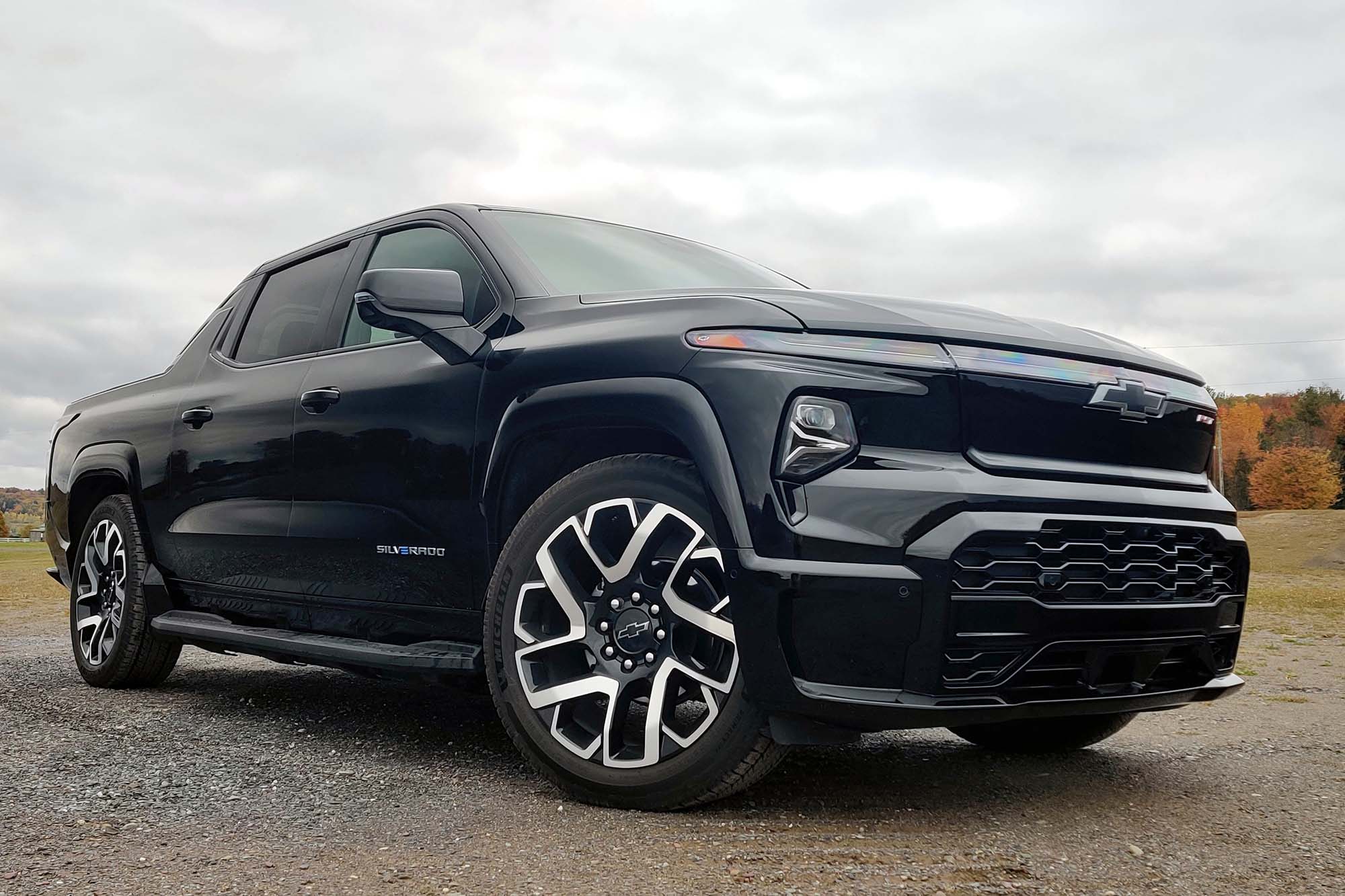 Benjamin Hunting
Benjamin Hunting
For commercial fleet buyers, there's a stripped-down Silverado EV work truck available. Currently, retail consumers can choose from a single trim level called the First Edition RST. Chevy prices it from the mid-$90,000s, including the $1,995 destination charge to ship the truck from the Hamtramck, Michigan, factory that builds it to your local dealership. Though it's made in the United States, the First Edition RST does not qualify for federal income tax credits.
For this Silverado EV review, I drove the First Edition RST on the urban streets of Montreal, Quebec, and the mountain roads and highways of the Eastern Townships. The test truck had no options, so the manufacturer's suggested retail price was $96,495, including the $1,995 destination charge. Chevrolet provided the vehicle for this Silverado EV review.
 Benjamin Hunting
Benjamin Hunting
Is the 2024 Chevrolet Silverado EV a Good Electric Vehicle?
If you want an EV with a high range, a spacious interior, and excellent straight-line performance, then the Chevrolet Silverado EV has you covered. If you're looking to tackle traditional truck duties, this version of the Silverado comes with practical limitations such as comparatively reduced cargo capacity and a towing-range drawback. To be fair, electric competitors, including the Rivian R1T and Ford F-150 Lightning, share those downsides.
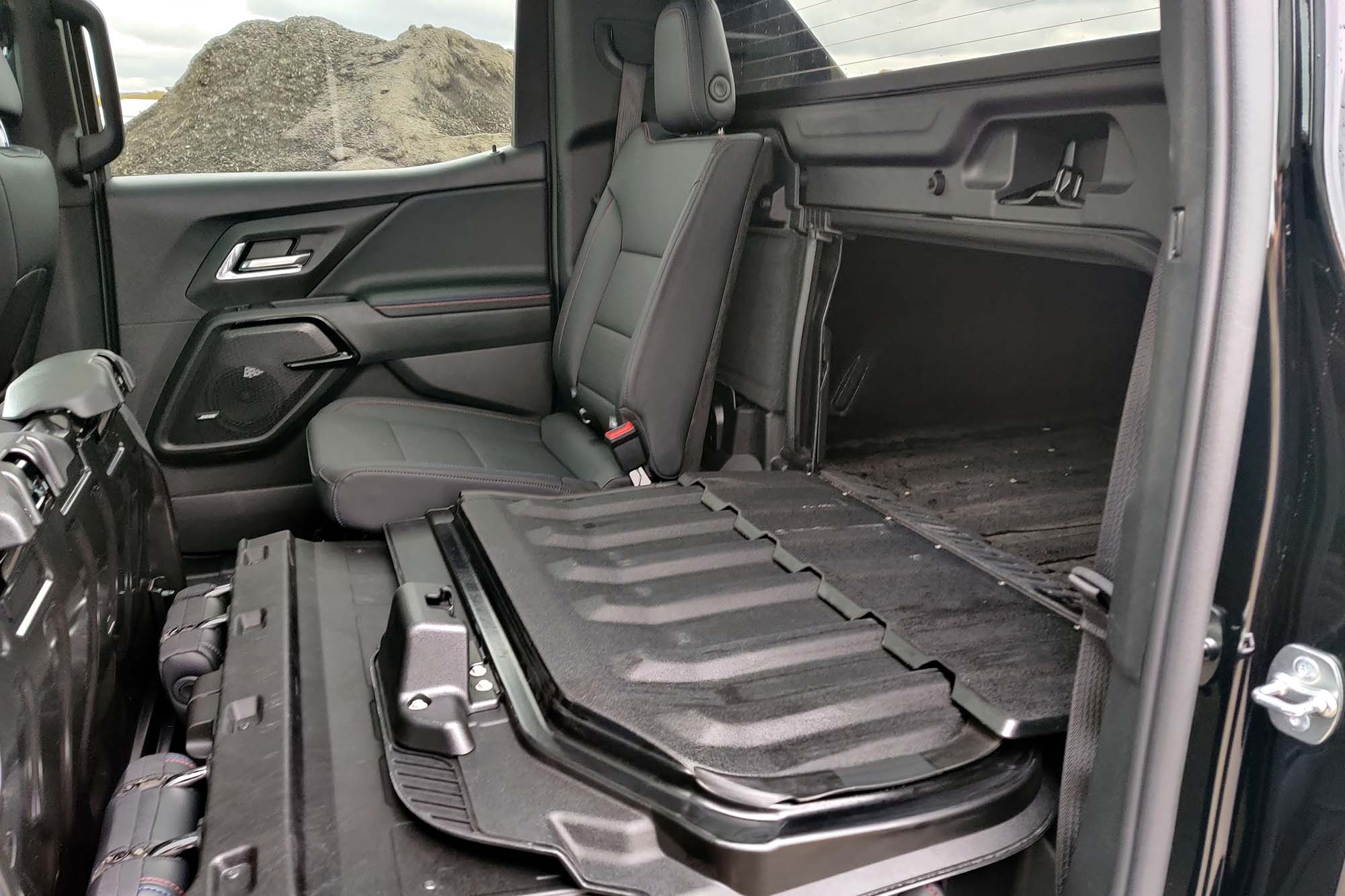 Benjamin Hunting
Benjamin Hunting
The Silverado EV Cab Design Is a Nod to the Avalanche
The Silverado EV's visual reference to the Chevrolet Avalanche pickup of old is more than just a styling conceit. The flying buttresses that lead the eye from the roofline to the cargo box conceal the Midgate assembly behind the back seat.
The Midgate consists of a fold-flat bulkhead and 60/40-split folding rear seats. It extends the Silverado EV's cargo bed from 5 feet and 11 inches to more than 9 feet, and if the Multi-Flex tailgate is dropped, that figure climbs to 10 feet, 10 inches. If necessary, drivers can even lift out the rear glass window and tuck it under the bulkhead.
Unfortunately, if you're carrying loose cargo — such as wood chips or sod — it negates the advantage of the Midgate or the tailgate extender, as it would simultaneously fly out the back of the truck and muck up the interior. Even a more stable load like bricks or stone is a no-go due to potential cabin intrusion and tailgate exit.
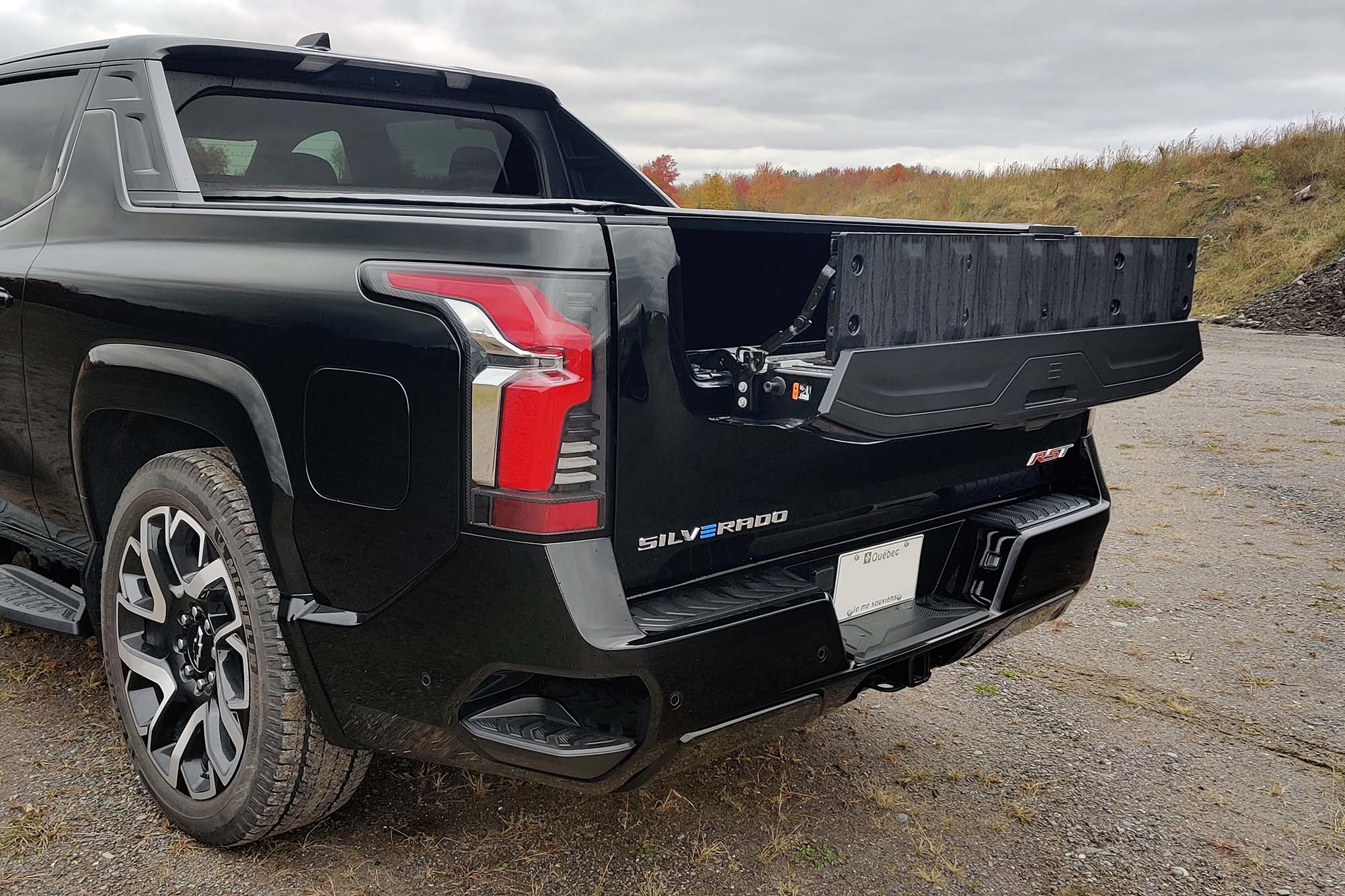 Benjamin Hunting
Benjamin Hunting
Because of the Silverado EV's unique design, there's another issue at play. The truck features high bed rails, especially at the front, where the buttresses block access almost entirely. Here, the Silverado EV reveals itself to be "less" of a pickup than the F-150 Lightning, which features bed rails and self-contained cargo bed make up for the 4 inches or so it gives up to the Chevrolet in overall length.
It's worth mentioning that the Midgate also eats up interior storage, since the seats fold down rather than lift up as in most other pickups. A helpful front trunk (frunk) under the hood helps to make up for that, and rear passengers benefit from a substantial amount of room to stretch out. There's similarly generous real estate in the front seats, making the Silverado EV feel every inch the behemoth pickup it is.
Overall, I think the Silverado EV First Edition RST's cabin presents well, although I feel the materials don't quite match the truck's six-figure-adjacent price tag. During my evaluation, I also heard a constant rattle somewhere deep inside the dashboard.
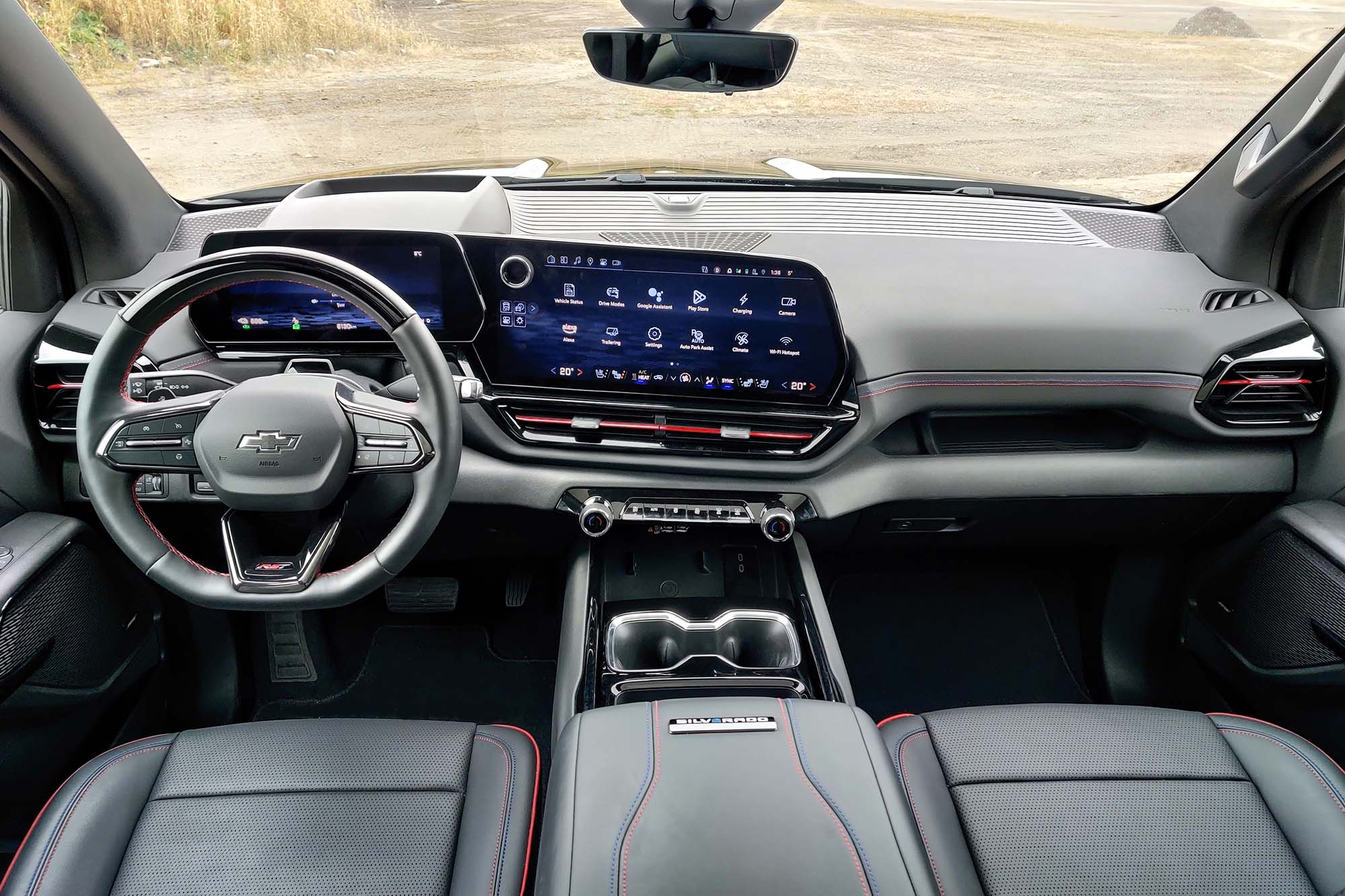 Benjamin Hunting
Benjamin Hunting
No Smartphone Mirroring, but Super Cruise Is Excellent
With its latest EVs, GM doesn't provide access to Android Auto and Apple CarPlay. Instead, you get a Google-based infotainment system that requires you to log in to the vehicle with a Google account and re-download any apps you use on your phone to the native display.
That's an odd decision and one that's not proved popular. While Chevrolet has stated the move is about limiting driver distractions and eliminating compatibility issues, it also allows the company to monetize the data-tracking potential of its vehicles. I found that the Bluetooth streaming feature in the Silverado EV — one way around the system — wasn't as feature-rich as other models.
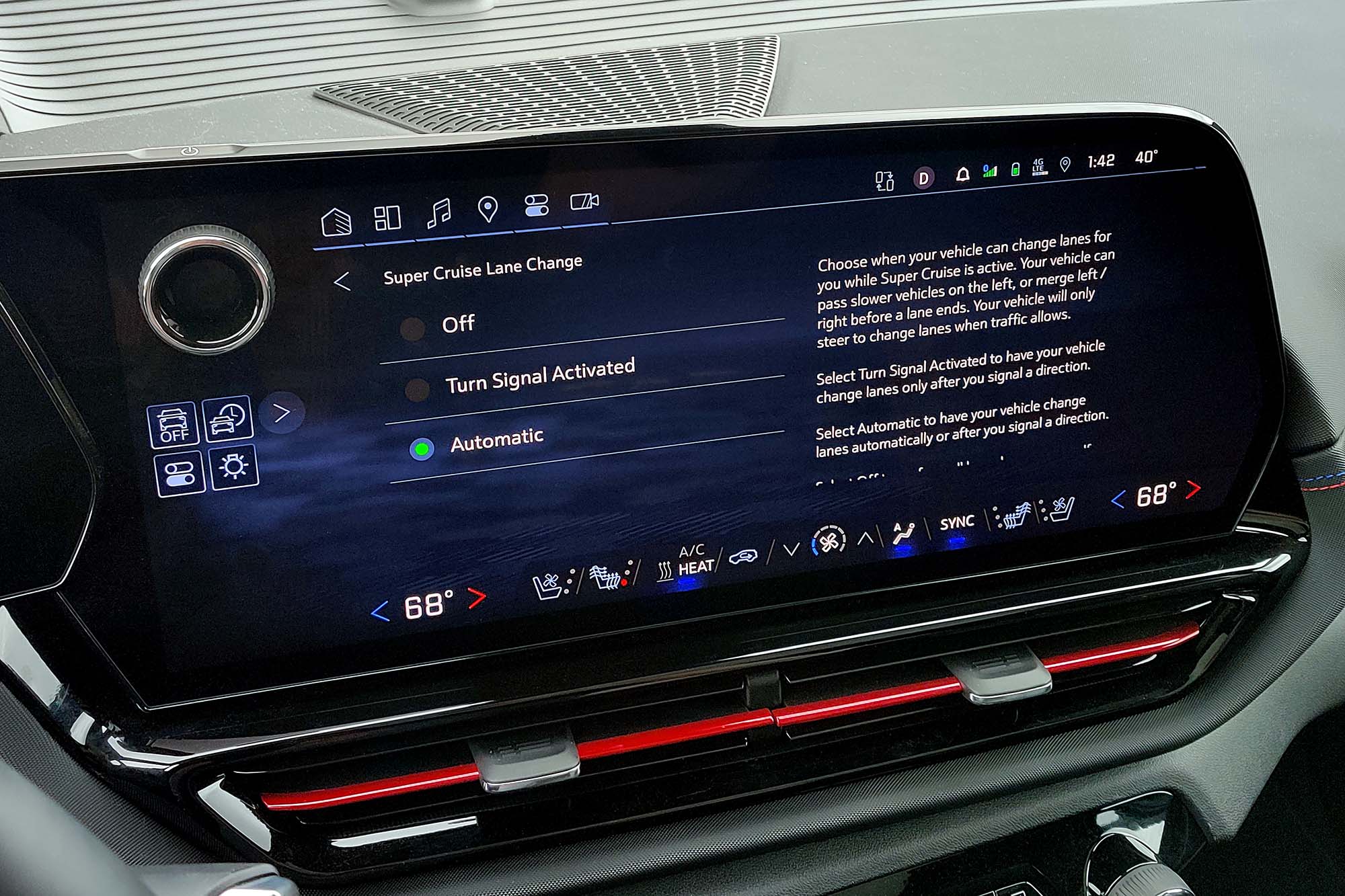 Benjamin Hunting
Benjamin Hunting
I'm more optimistic about the test truck's Super Cruise technology, which, in my opinion, is the best semi-autonomous hands-free driver-assistance system available.
Engage Super Cruise, and the system will maintain vehicle speed, steer the truck, and automatically pass slower traffic on the highway, all without a driver holding the steering wheel. I successfully used it on two-lane and interstate-type roads, and it even worked with a trailer attached (although the lane change feature became unavailable).
Finally, the Silverado EV boasts 350-kilowatt DC fast-charging capability. That is extremely quick charging for any EV, and it's necessary given that the First Edition RST's massive battery pack offers more than 200 kilowatt-hours (kWh) of capacity. That's enough to give the Silverado EV a whopping 440 miles of driving range, which puts it ahead of any other electric pickup.
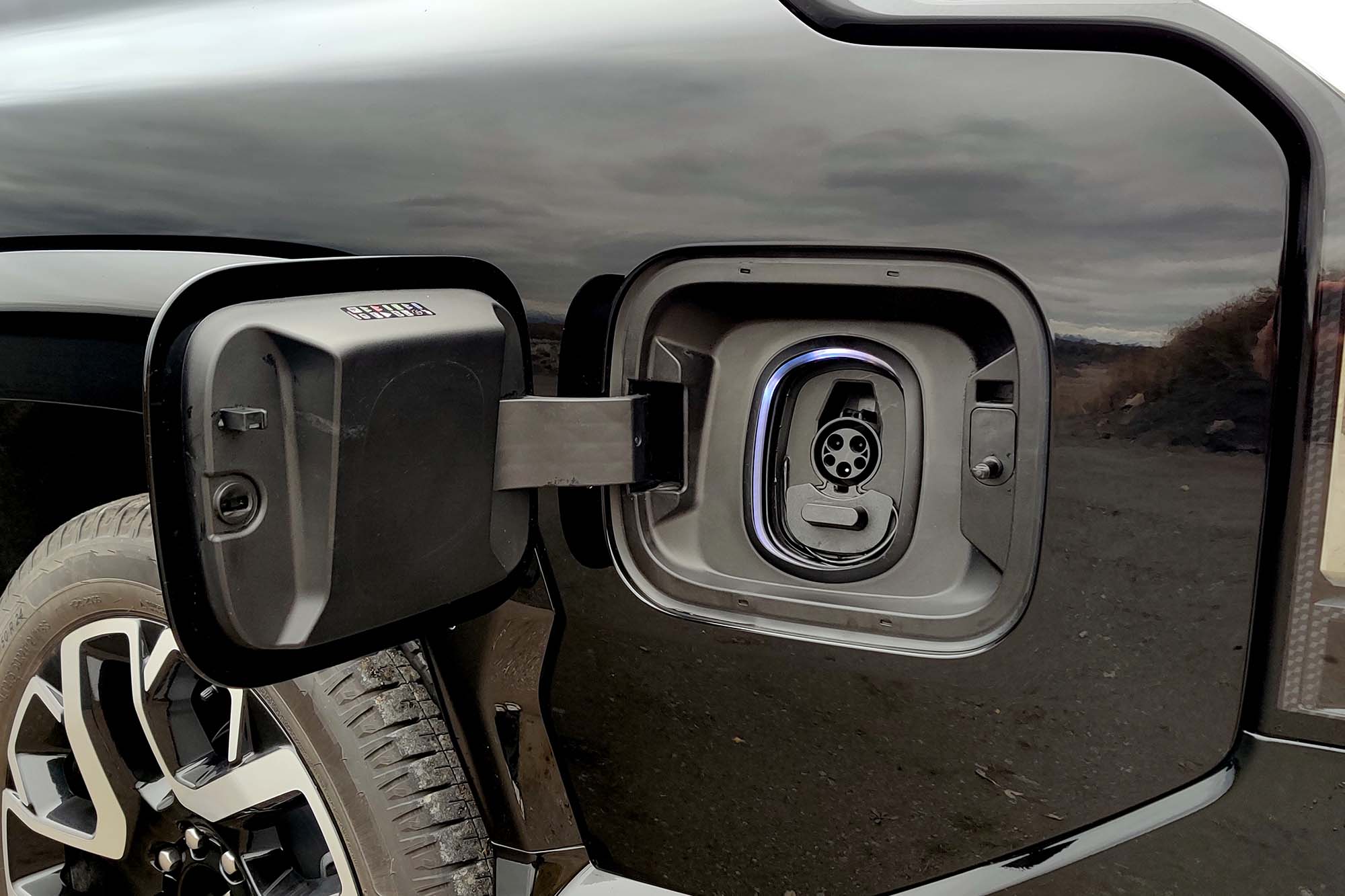 Benjamin Hunting
Benjamin Hunting
Big Power and Big Range — Until It's Trailer Time
Chevrolet discloses only the Silverado EV's maximum power output. Its specification sheets reference "up to" 754 horsepower and "more than" 785 pound-feet of torque, but these numbers are available only in "Wide Open Watts" (WOW) mode, accessible via a double-lightning bolt icon on the drive mode screen.
In other modes — Sport, Normal, Tow/Haul — lower output levels improve driving range, but the reduction in horsepower and torque is unknown. The difference is palpable. With WOW mode engaged, the First Edition RST shoots forward at a rate that briefly makes its 9,100-pound curb weight disappear. The rest of the time, acceleration is still good but considerably muted in comparison.
Not that I'm complaining. In such a heavy vehicle, the benefits of rocket-like propulsion feel more terrifying than tantalizing, and this is true of the Silverado EV because it feels every ounce of its three-ton mass when negotiating tighter corners. This truck benefits from a calm hand on the tiller and a responsible right foot. In close quarters, at slower speeds, I found the First Edition RST's four-wheel steering noticeably helpful when negotiating drive-throughs or parking.
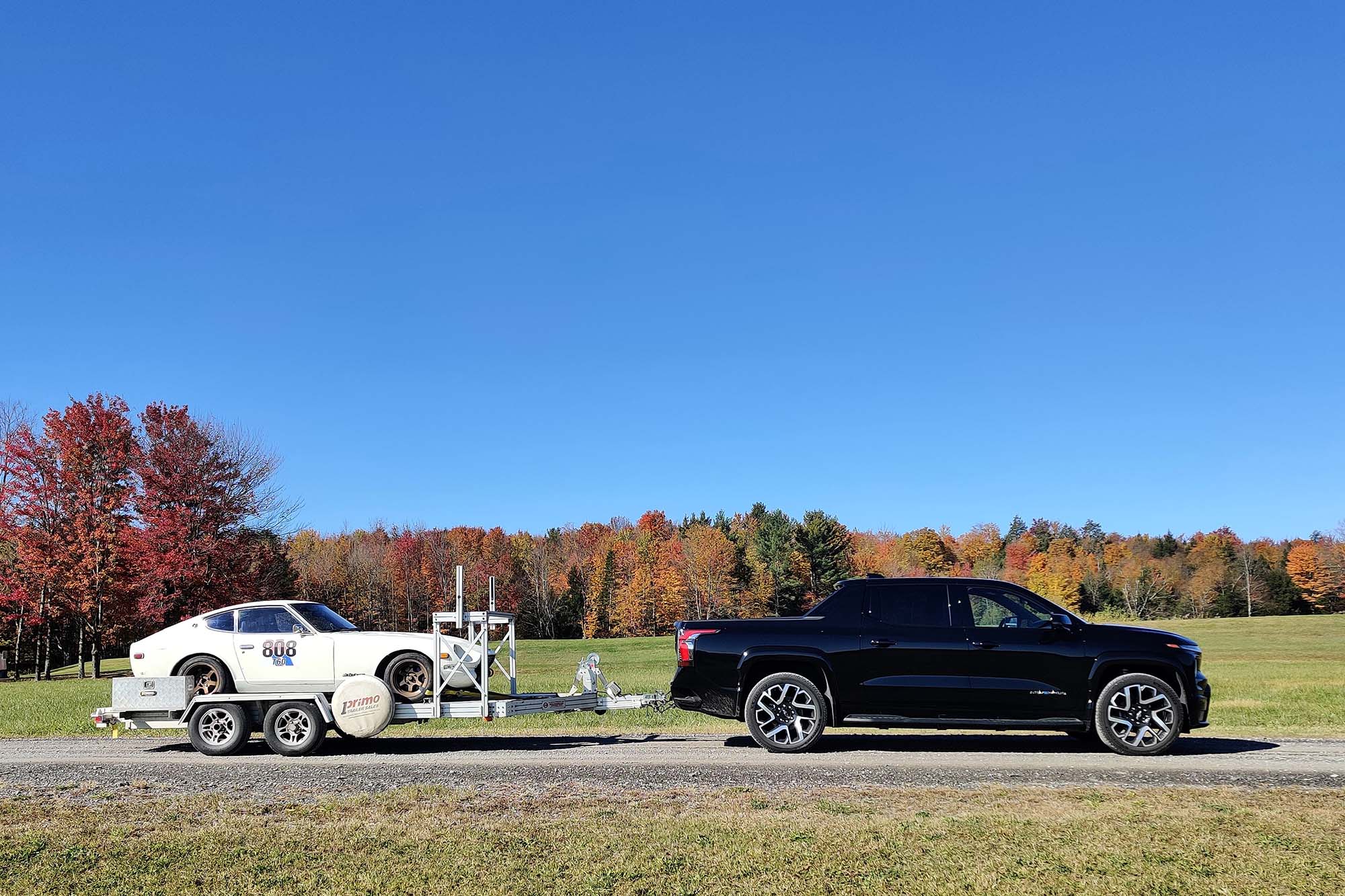 Benjamin Hunting
Benjamin Hunting
Regardless of the driving mode, there's plenty of power to do actual truck stuff. For example, when hitched to my race trailer, the Silverado EV towed my Datsun track car like it wasn't even there, providing near heavy-duty hauling acumen.
The trade-off is a severe reduction in overall range when towing. As with most electric vehicles, the Silverado EV's range estimate dropped by almost 50% once the trailer harness was connected, showing 232 miles of available range. However, after 50 miles of lugging, that estimate proved somewhat conservative, as I still had 206 miles of range showing.
Overall energy efficiency decreased by roughly 40%, falling from 1.7 miles per kWh to 1.1 miles per kWh thanks to the trailer's 3,500 pounds of load and aero interference. That's about a third of its 10,000-pound maximum tow rating, which means you can expect the electrons to evaporate even quicker the more weight you add to the mix.
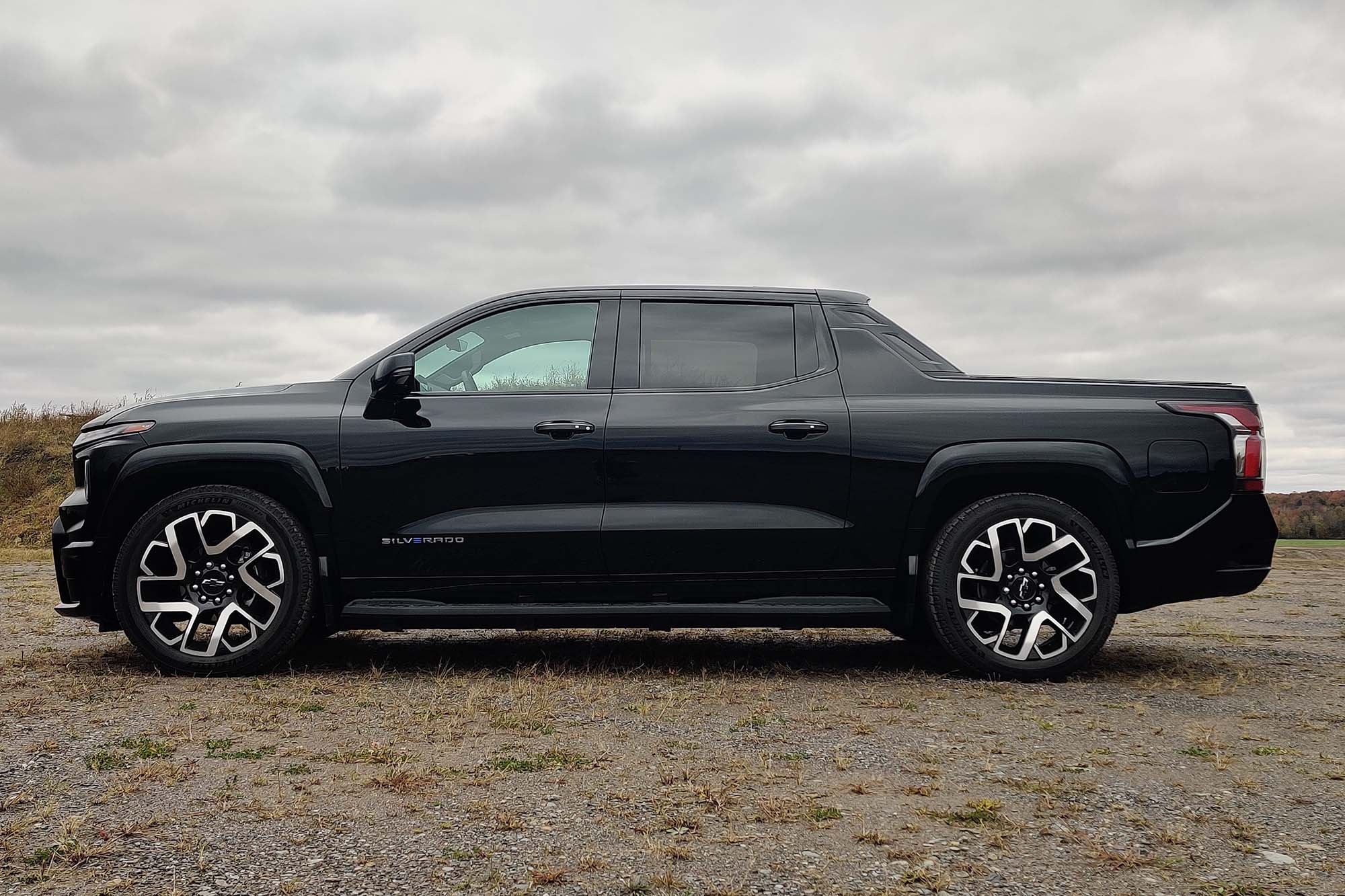 Benjamin Hunting
Benjamin Hunting
Although expensive, Chevrolet's first all-electric pickup is impressive in many ways, offering outstanding range, substantial practicality, and much more performance than most drivers realistically need. However, that comes with a few quirks and restrictions associated with the Silverado EV's expandable cargo bed, its frustrating lack of proper smartphone infotainment mirroring, and the range drop that affects any electrified towing platform.
Written by humans.
Edited by humans.
 Benjamin Hunting
Benjamin HuntingNearly two decades into his career as an automotive journalist, Benjamin has had his hands greasy, his hair blown back, and his heart broken by more than one project car. In addition to his work at Capital One, he has contributed features and reviews to Motor Trend, Car and Driver, Hagerty, Driving Line, Inside Hook, Super Street, European Car, Roadkill Magazine, Motor 1, The Drive, the Toronto Star, the National Post, Business Insider, NAPA, Autoblog, Automotive News Canada, and AutoGuide. He is also cohost of the Unnamed Automotive Podcast and cocreator of the Code 45 and Dead Air graphic novels. In his spare time, he's a friend to vinyl and enjoys keeping the shiny side up during track days.
Related articles
View more related articles